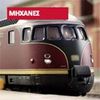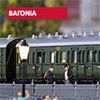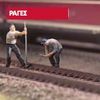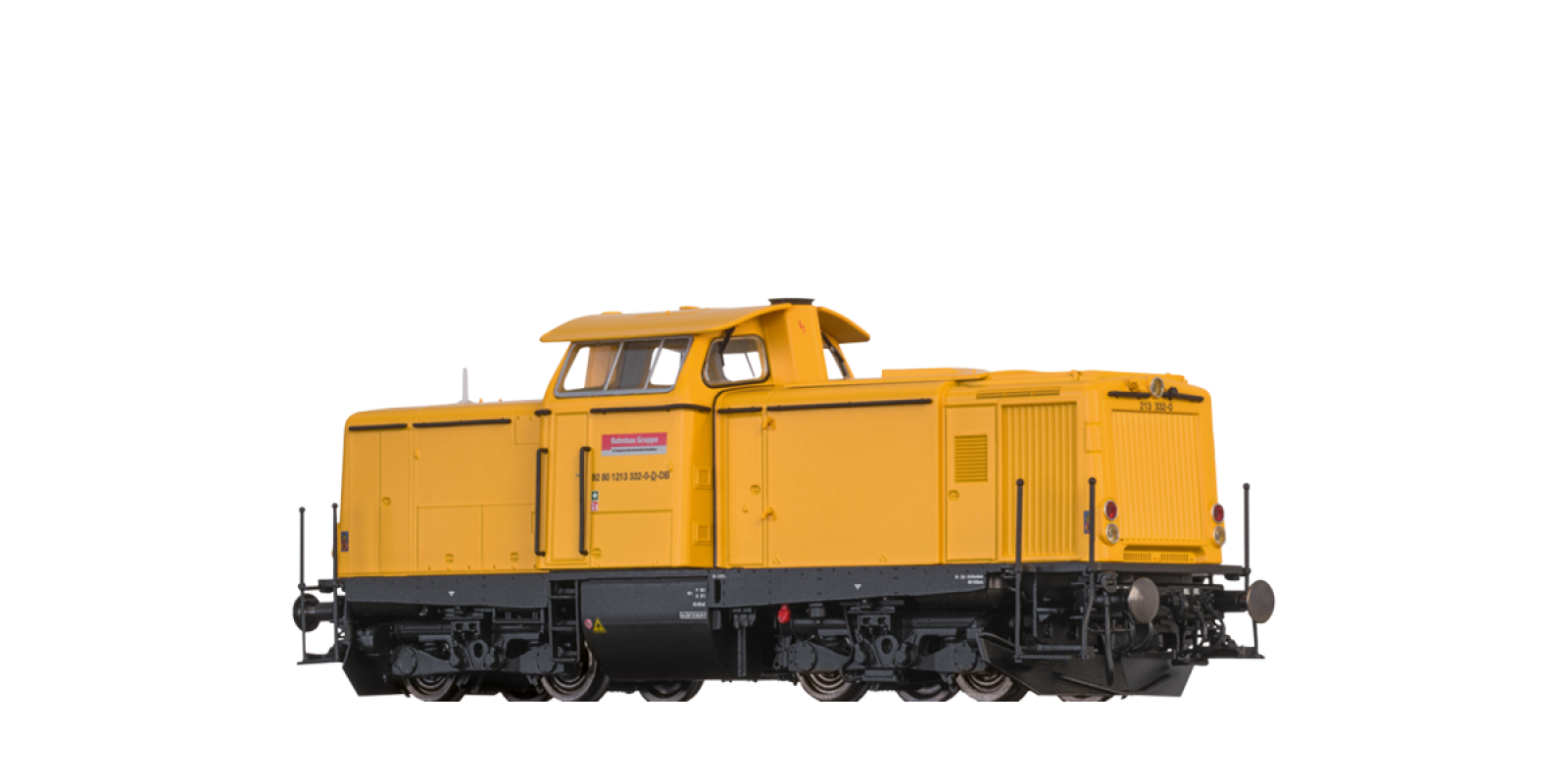Diesel Locomotive BR 213 DB AG, Bahnbau Gruppe
DC VERSION
Model details
- All specific details of the different series taken into consideration
- Etched cooler grille and fan grille
- Free-standing handrails
- Spring buffers
- Clear view through the driver's cabin
- Realistic reproduction of the tubular frame bogies incl. axle drive
- Reproduction of brake rods
- Completely recreated driver's cab
- Die-cast zinc chassis and gear housing
- Lights fitted with maintenance-free LEDs
Digital Version EXTRA:
- Functional, switchable fan
- Filigree electronic coupling (interchangeable thanks to NEM standard)*
- Incl. energy storage (buffers sound, motor and light)
- Extensive light functions: shunting lights, drivers cabin lighting, tail lights separately switchable
- Optimized lighting control for drive and shunting mode
- Flicker-free light, due to stabilized 5V power supply which is buffered through a separate capacitor
- Original sound
- Noiseless 16-bit sound with up to 8 independent channels thanks to latest sound technology and excellent sound characteristics
- Optimal motor and load control for perfect running characteristics
- Compatible with all established digital systems (DCC, Motorola, SX1 und SX2)
- Enclosed locomotive card in the AC version
Info about the original
With the adoption of the 1955 diesel locomotive type program, the foundation for a success story was laid at the Deutsche Bundesbahn (DB) [German Federal Railway] that, to some extent, continues to the present day. The decision was made to develop a diesel locomotive for the secondary railway service with an engine output of between 1,000 and 1,200 HP, the V100 series. Based upon the slightly older V80, the Bundesbahn Central Office in Munich issued concrete change requests to the MaK Company in order to significantly reduce the costs for the new locomotives. By 1957, this resulting catalogue of requirements thus lead to a largely completed construction of which the Deutsche Bundesbahn ordered six trial locomotives. MaK manufactured a further locomotive at ist own cost in order to also be able to address customers other than DB. With the V100 000, the first of 744 manufactured locomotives of the V100 series left the MaK factory halls in Kiel in March 1958. Like no other locomotive series, it embodied the structural change on the railway that was inevitibly coming. In the middle of Germany's economic miracle, the crimson locomotives shaped the image of the young, modern Deutsche Bundesbahn and sent numerous old steam locomotives to the blast furnaces. The diverse applicability of all three sub-types ensured that the V100 was widely distributed throughout Germany and kept many less frequented secondary railways alive. Approximately a third of all V100 locomotives were equipped with a push-pull train control and multitraction control ex works in order to do away with the time-intensive shunting in train stations where it was necessary to turn the train around. At the beginning of the 1970s, individual locomotives started to be equipped with front-mounted snow ploughs. The first large quantities of the V100.10 (211) were only withdrawn from service at the end of the 1980s. This process only started approximately 10 years later for the V100.20 (212). A reasonably large amount were sold on to other railway companies abroad. Thanks to their reliability and robustness in particular, there are still a few locomotives in operation today after approximately 50 years of operation and are largely being used by private railway companies in Germany. During the mid-1960s, the Deutsche Bundesbahn was looking for an inexpensive replacement for the steam locomotives from the 82 and 94.5 series complete with counter-pressure brakes that were suitable for the last steep routes. In doing so, the decision was made to equip 10 locomotives from the third and final batch of the V100.20 with an additional hydrodynamic brake alongside the compressed air brake and handbrake. The most striking distinguishing feature of the V100 2332 to 2341 compared to the V100.20 series is the large air intake grille on the right hand side of the long front end directly behind the cooler shutters as well as the omission of the auxiliary diesel unit.
Year of construction: 1962
Lenght: 12,3 m
Velocity: 100 km/h
Service weight: 63 t
kW: 993











































































